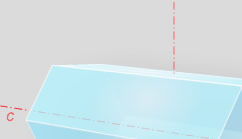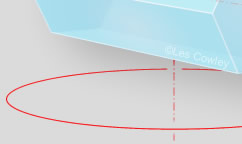
OPOD
What's New
Rays & Shadows
Water Droplets
Rainbows
Ice Halos
Contents
Crystals
Crystals & Halos
Columns & Plates
Orientations
Plate
Column
Parry
Lowitz
Random
Face numbers
Real Crystals
Diamond Dust
Pyramidal
Frequent Halos
Infrequent Halos
Multiple Displays
Other Worlds
Observing Halos
HaloSim
High Atmosphere
Links & Resources
Search - Index
123456789012345678
| Column Orientation and Column Arcs |
|
A
high drag orientation for column crystals is with their long ‘c’ axis
horizontal and so they drift. The c axis is parallel to
the edges of the prism faces and perpendicular to the end faces. |
 |
 |
 |
 |
 |
 |
| upper tangent arc | lower tangent | supralateral arc | infralateral | pillar |
|



